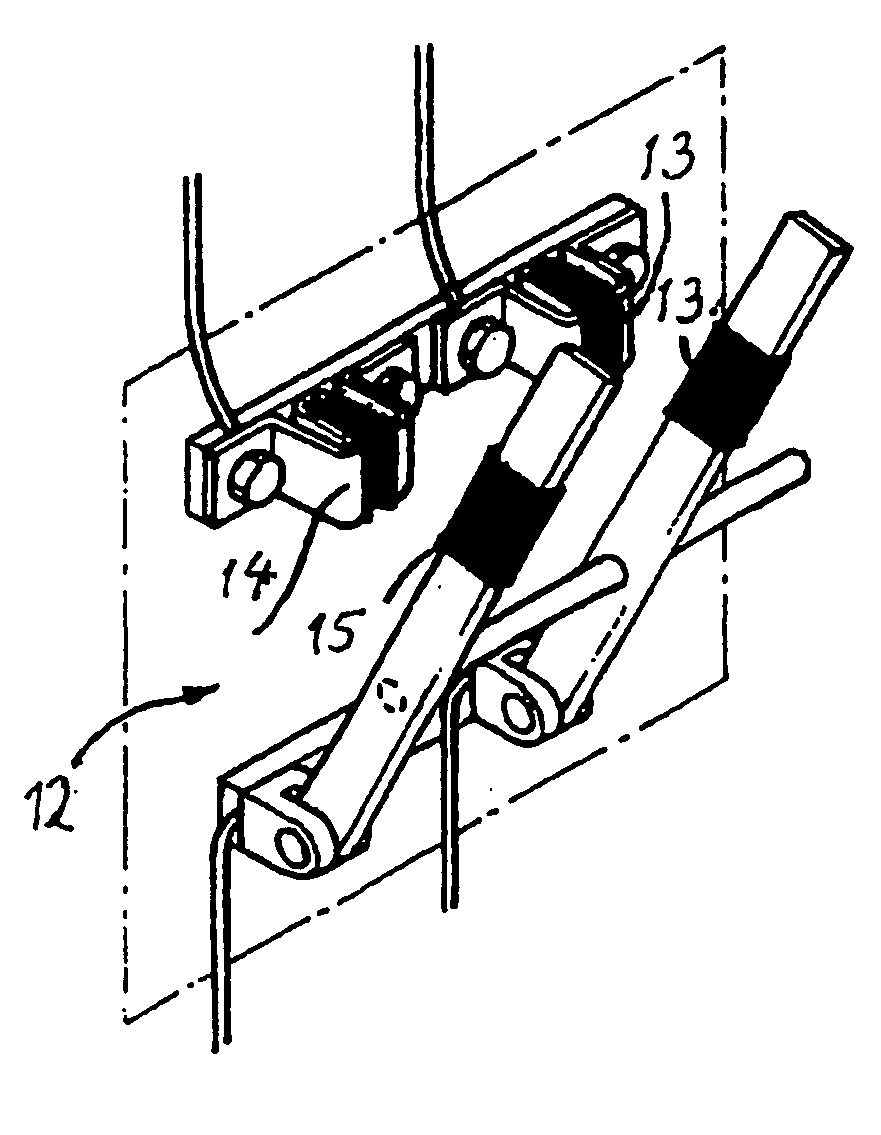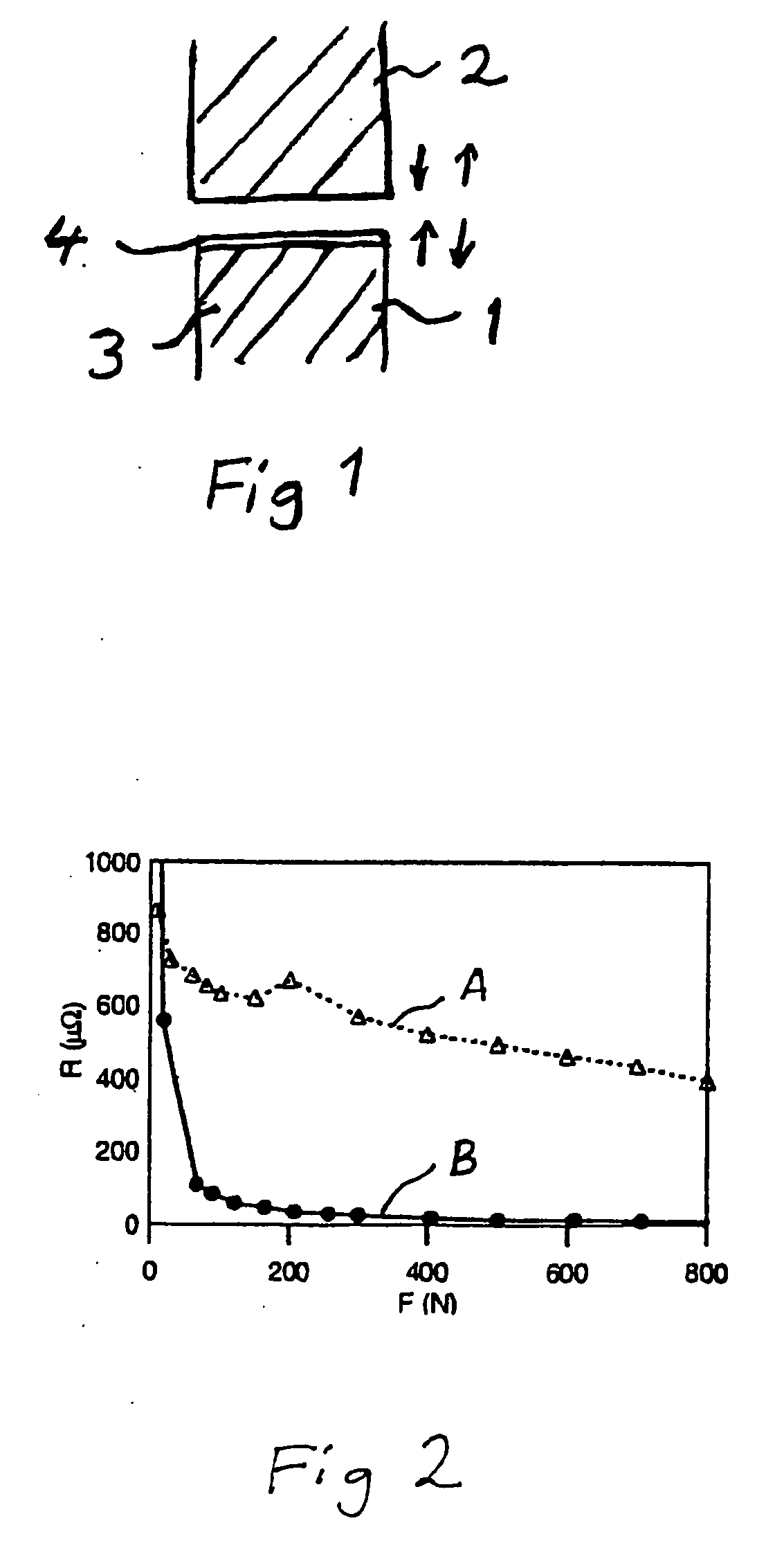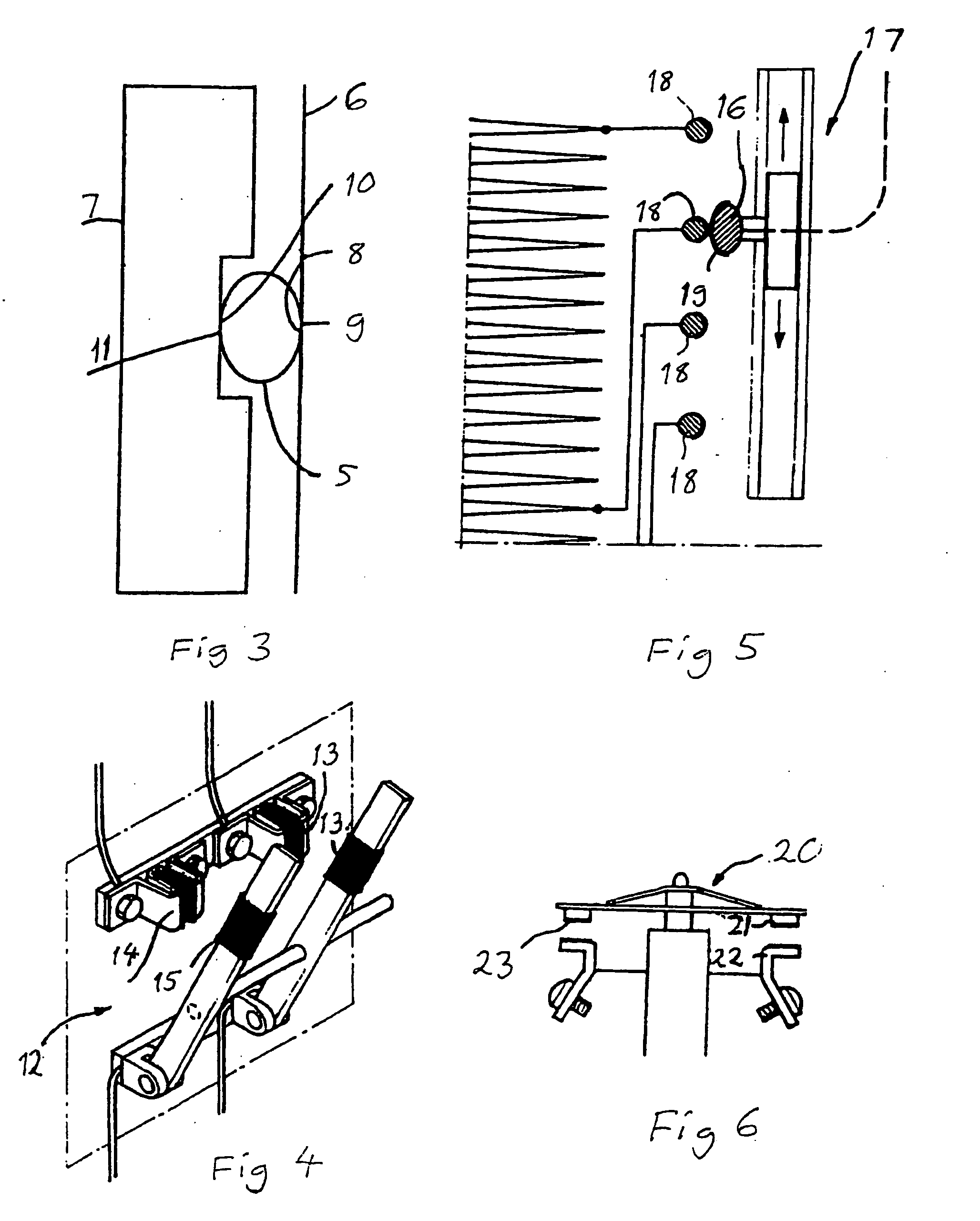Contact Element and a Contact Arrangement
- Summary
- Abstract
- Description
- Claims
- Application Information
AI Technical Summary
Benefits of technology
Problems solved by technology
Method used
Image
Examples
Embodiment Construction
[0034]A contact element 1 forming an electric contact to a contact member 2 for enabling an electric current to flow between said contact element and said contact member is very schematically shown inFIG. 1. The contact element comprises a body 3, which may be for instance of aluminium or copper, and has at least one contact surface thereof coated with a contact layer 4 to be applied against said contact member. The contact layer 4 has typically a thickness of 0.05-10 μm, so that the thickness shown in FIG. 1 is exaggerated with respect to other dimensions of the contact element and the contact member for illustrating purposes.
[0035]The contact layer 4 comprises a nanocomposite film having a matrix of amorphous carbon and crystallites of nano-size, i.e. with dimensions in the range of 1-100 nm, of at least one metal carbide embedded therein. This gives the contact layer the excellent properties reported above. The metal is preferably a transition metal. The hybridization of the amor...
PUM
 Login to View More
Login to View More Abstract
Description
Claims
Application Information
 Login to View More
Login to View More - R&D
- Intellectual Property
- Life Sciences
- Materials
- Tech Scout
- Unparalleled Data Quality
- Higher Quality Content
- 60% Fewer Hallucinations
Browse by: Latest US Patents, China's latest patents, Technical Efficacy Thesaurus, Application Domain, Technology Topic, Popular Technical Reports.
© 2025 PatSnap. All rights reserved.Legal|Privacy policy|Modern Slavery Act Transparency Statement|Sitemap|About US| Contact US: help@patsnap.com



